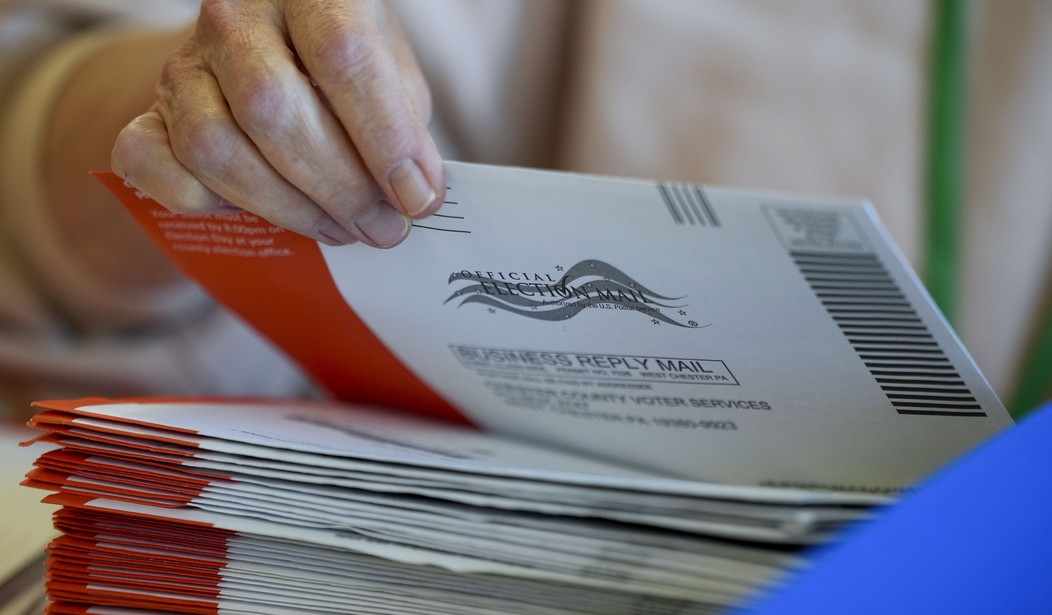It took eight days for Americans to learn that Republicans will control the U.S. House of Representatives. By how many seats? We still don’t know, thanks mainly to California and its notoriously inefficient election system.
As of Wednesday, the Golden State still had roughly 2.1 million votes to count and roughly half of the outstanding House races are in California districts. It may be weeks before we know the final tallies, or even longer if close contests lead to lawsuits. California is holding up the business of the country, and Americans want to know why.
The reason is partisan politics. Progressives have built a political machine of partisan groups and nonprofits that specialize in ginning up votes for Democrats, and California’s election system is set up to cater to its every need. West coast Democrats have developed vote harvesters’ dream election system, sacrificing security and adopting policies that make delays inevitable.
The primary culprit is all-mail voting. In 2020, California began sending all registered voters a ballot, whether or not they want one. The practice is expensive and wasteful. Many people don’t want to vote by mail, and bloated voter rolls guarantee the state is sending ballots to people who have moved away or died.
Mail-in ballots take longer to process and generally require more people to sort and tabulate them. Officials must verify the voter’s information, check his signature against records, and verify he did not already vote elsewhere, all before a ballot can be counted. Voters can leave their ballots at any drop box or polling place statewide, adding even more time if ballots need to be forwarded to a voter’s home county.
Ballots returned by mail can trickle in seven days late, making it impossible to know how many votes were even cast until a week after voting is over. And voters have until December 1—nearly four weeks after the election—to resolve, or “cure,” problems with their ballots.
Recommended
Ballots cast in person are generally the easiest and quickest to count, but California has chosen to make this more complicated, too. In-person voters are supposed to bring their mail ballots with them, otherwise they may be asked to cast a provisional ballot, adding yet another step to the process. And the state lets anyone register on Election Day and vote a conditional ballot, which can only be counted after officials verify the voter’s eligibility. As of Wednesday, there were over 342,000 conditional ballots pending statewide.
California Democrats claim all this is necessary to maximize participation by making voting as easy as possible. But turnout rates in California in both 2020 and 2022 lagged behind New Hampshire, a state that requires nearly everyone to show up at the polls on Election Day.
The real winners are left-wing groups focused on helping Democrats win elections. These groups don’t have to persuade people to register, go to the polls, or even request a mail ballot. All they have to do is show up at the homes of targeted voters and collect the ballots they know are there. Activists can be paid to “assist” an unlimited number of voters, take their ballots, and stuff them into drop boxes—all without supervision or safeguards that might slow them down. State leaders even went out of their way to ban voter ID when conservative Huntington Beach voted to adopt it. This isn’t about making it easy to vote, it’s about making it easy to harvest votes.
Contrast all this with Florida, which once again delivered prompt results in a high-turnout election. Floridians can vote early and anyone can request a mail ballot, so voting is unquestionably convenient. But it is also secure thanks to laws like voter ID and bans on vote harvesting, while other measures like Election Day deadlines for mail ballots help ensure results on election night. Florida spent 20 years building and refining this system after the debacle of 2000, and it shows.
Don’t expect California to follow suit. From the outside, the state’s election system is in a shambles. But to liberal politicians, it is working as intended: helping to keep California a one-party state. That might explain why Democrats keep demanding Congress nuke the filibuster and pass a bill like H.R. 1 to impose California-style election laws on all 50 states.
The beauty of federalism, though, is that each state is a laboratory of democracy. California is showing the nation what not to do. Its leaders would be wise to consider Florida-style reforms—once they finally finish counting the votes.
Jason Snead is the executive director of Honest Elections Project Action.



















Join the conversation as a VIP Member